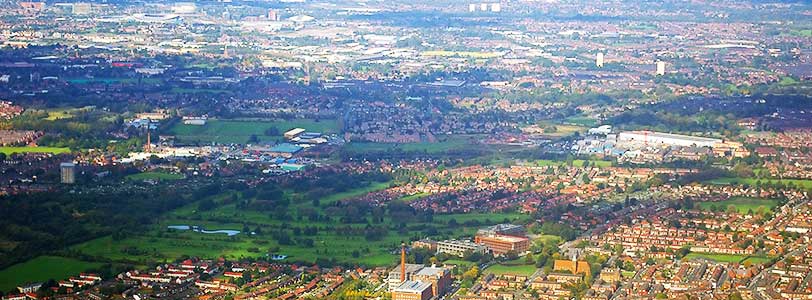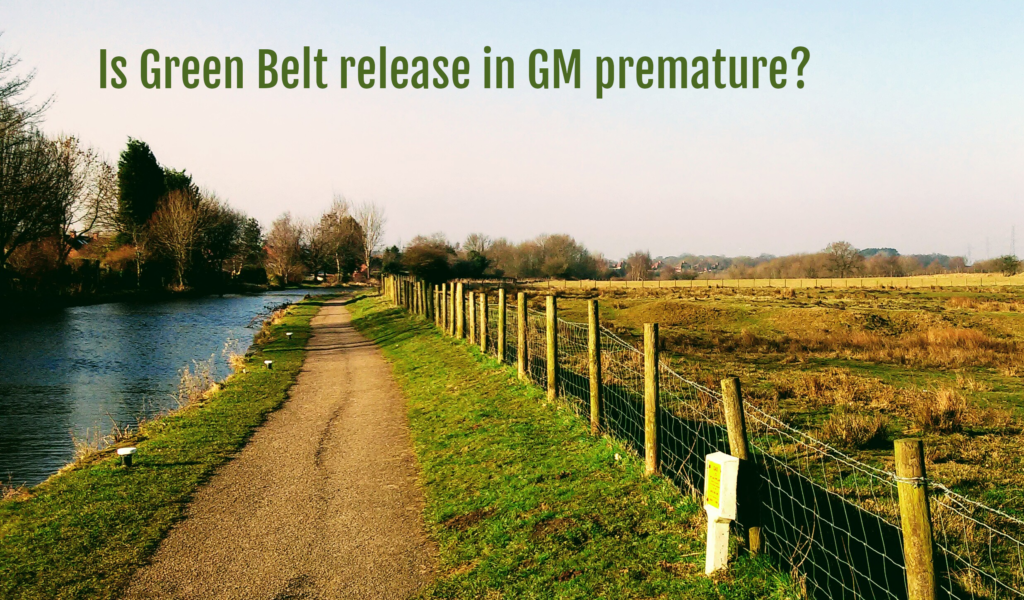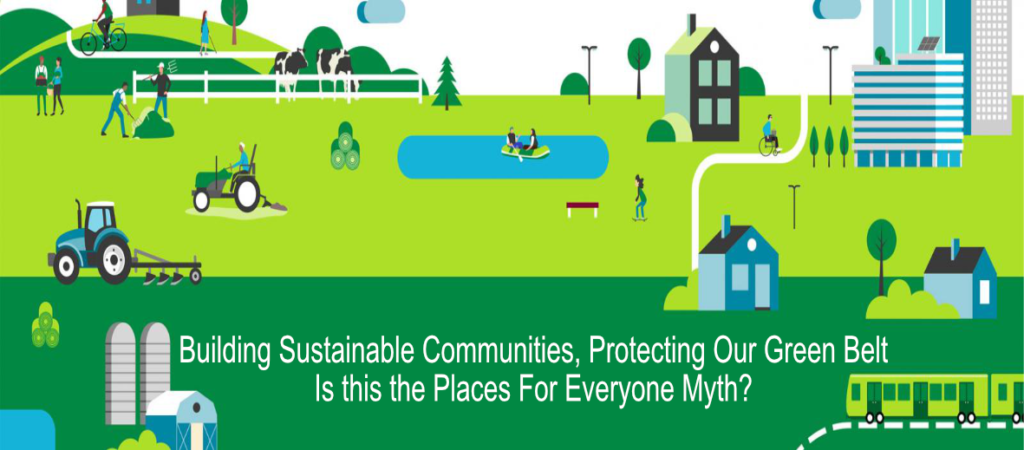Unnecessary Release of Green Belt in the Places for Everyone Spatial Plan
Open Letter to Councillors in Districts supporting the Unnecessary Release of Green Belt in the Places for Everyone Spatial Plan
Dear Councillor
The Save Greater Manchester’s Green Belt Group is an umbrella body for over 40 community organisations across Greater Manchester. You will not be surprised to hear that our members disagree with the intention to release 2,388 hectares of Green Belt across the region. Do not be fooled by figures that suggest the “net” reduction is less than this. Adding a couple of small holdings and parks into Green Belt does not change the fact that what WILL be released (and then destroyed) is the equivalent of over 2,985 football pitches!
We are writing to explain our concerns and to provide some factual data now that the Planning Inspectors have concluded their examination of the Places for Everyone (PfE) plan. We hope you will consider this information when you are making your decision about the next steps in the planning process.
We are not anti-development, and we totally support the Joint Development Plan model, with its suite of regional policies. These should, however, lead to sustainable development, and that is not currently the case. You will be aware that the National Planning Policy Framework defines the objective of sustainable development as “meeting the needs of the present without compromising the ability of future generations to meet their own needs” (paragraph 7). This is especially important given the nine Local Authorities, the Greater Manchester Combined Authority (GMCA) and the associated Health Authorities have all declared a climate emergency.
We recognise there are anomalies in the land designated as Green Belt, with some urban areas including land that remains designated for historical reasons, but these are not the sites that are planned for unnecessary release in PfE.
Why Unnecessary?
The Green Belt sites being allocated for development in PfE are in isolated locations, currently offering many natural capital benefits, supporting rural jobs and comprising irreplaceable habitats, grades 1, 2 and 3 best and most versatile agricultural land, woodland and wetland habitats. We do not believe the Planning Inspectors’ decision to retain these Green Belt sites in the PfE plan gave appropriate weighting to the importance of the existing land use, particularly when balanced with the fact that Greater Manchester has identified sufficient land in their Strategic Housing Land Availability Assessments (SHLAAs) to build more homes than is required by the government’s current methodology, without releasing Green Belt.

In fact, the SHLAAs identify sufficient existing land supply to create the equivalent of two new boroughs in Greater Manchester.
Note that Planning Practice Guidance suggests that land should only be included in the SHLAAs if it is considered to be “suitable, available and achievable”. These lists (one for each district) do not contain all sites on the associated brownfield registers, so, with the government’s devolution funding and other public money being made available, even more land may come forward during the 17 year planning period. |
The PfE plan has also inflated the warehousing requirements by including an excessive 75% buffer, planning for around 50% of the warehousing to be built in unsustainable locations, on land currently designated as Green Belt (meaning huge numbers of additional HGVs will be travelling on our local roads).
In addition, this regional plan, which covers 9 Local Authorities, does not allocate any land for environmental protection or enhancement. A local qualified ecologist has raised concerns about the procedures followed in the preliminary ecological appraisals. Greater Manchester has not undertaken the appraisals in line with the latest guidance issued by the professional body (CIEEM), it seems the 2013 guidelines have been used. In fact, ecology/biodiversity evidence for allocated sites is limited or non-existent (which is unacceptable given that allocation itself is a huge benefit to future planning applications).
Don’t be fooled by the label on the plan either, Places for Everyone is focused ONLY on market housing and warehousing. So maybe it should be renamed “Places and Jobs for Some People”! It is a discriminatory plan which, during the Examination in Public, has seen the policy on affordable housing weakened and the targets that would ensure housing provision for the most vulnerable in our society REMOVED from policy! Housing for other vulnerable groups (including gypsies/travellers, students, etc) has also been relegated to subsequent Local Plans, along with the Rural Economy. This means that the released Green Belt land is being prioritised for market housing and warehousing employment, and, given that land will be released on the day the plan is adopted, “brownfield first” will be forgotten as developers focus on greenfield sites, rather than on alternative, more sustainable, locations.
Furthermore, despite an admirable aim to be carbon neutral by 2038, the GMCA did not include detailed evidence in the PfE plan showing its impact on carbon emissions. This has been analysed in detail by our colleagues and the resulting report shows that the 2038 carbon neutrality objective is unlikely to be met, something which has been recognised in the GMCA’s own latest progress report.
With all of the above in mind, we are astounded that the Planning Inspectors believe exceptional circumstances have been evidenced for the release of Green Belt, especially Green Belt which hosts irreplaceable habitats, supports climate mitigation, provides food security or is home to threatened bird/wildlife species!
The publication of the 2021 Census data confirmed that our concerns about GM’s proposed level of growth are justified. Local SGMGB analysis utilised Census and ONS data to highlight that the number of new homes built in GM between 2011 and 2021 far exceeds the number of households formed during that period, with almost 28,000 completed dwellings not contributing to household formation. These excess houses could be investment homes, airbnbs or empty homes.That SGMGB analysis also revealed that (in the period to 2021) 50,000 fewer households formed than the number generated using the Government’s 2014-based formula, suggesting that this method of calculating housing need (which, as mentioned above, GM exceeds with its existing land supply) significantly over-estimates requirements. |
Our members asked us to raise our concerns with the Labour leadership, we did this back in January 2023, sending a letter to Sir Keir Starmer, his shadow cabinet, the Mayor of Greater Manchester and all the Labour MPs in GM. We did not even receive an acknowledgement never mind a response! This is not only disappointing, but, given SGMGB represents over 40 community groups across Greater Manchester, it demonstrates a total lack of respect for citizens, their views and their concerns.
We hope you will give due consideration to the issues we have raised as they affect current and future residents, particularly our children and grandchildren, who will have to live with the consequences of this plan.
Should you have any questions or need any clarification about the issues we have raised, please contact us at admin@savegmgreenbelt.org.uk.



